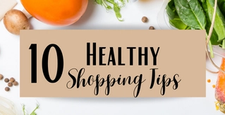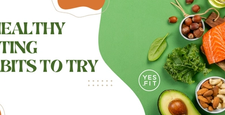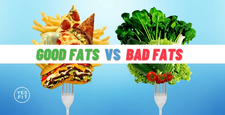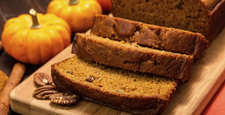The Complete Guide to Fats | Good Fats vs. Bad Fats
For years we’ve been told that all dietary fats are bad and to avoid them, and more recently that some fats are good, and we should consume them.
Today, we know there are good fats, bad fats, trans fats, saturated fats, mono- and polyunsaturated fats, and Omega fats.
With so much information, how can we determine which fats are good or bad? Here’s the complete guide to fats, to help you determine which ones are good and which ones are bad.
Good Fats
Good fats include those that improve heart health, but bad or unhealthy fats can increase your risk for cardiovascular disease among other problems. Knowing the difference allows you to avoid foods that can harm, as you take advantage of the fats that have health benefits.
This guide will help you learn which fats are bad and which are healthy because adding them to your diet can help slow the aging process, improve brain health, and protect your heart.
Fat Breakdown – The Good
Unsaturated Fats are from plants and maybe monounsaturated or polyunsaturated. Both are healthy and known to provide health benefits like reducing chronic internal inflammation, improving blood cholesterol, and even stabilize the heartbeat. Sources of these healthy fats include olive oil, avocados, flax seeds, and flaxseed oil, as well as nuts like pecans and walnuts.
Omega-3 fatty acids are a type of polyunsaturated fat that are important for eye health as well as promote heart health and support the lungs, immune system, and even hormonal health. All are essential for health and must be consumed through foods like flaxseed oil, walnuts, chia seeds, and cold-water, fatty fish like tuna and sardines.
Omega 6 fatty acids are another type of polyunsaturated fat. It is a necessary fat that can support health by reducing internal inflammation that is associated with chronic disease. These types of fats are found mainly in animal products and so should be used in moderation, with the healthiest form being conjugated linoleic acid (CLA), which can support fat loss. The best source of CLA in beef and dairy products from grass-fed cows.
Omega 9 fatty acids include oleic acid, mead acid, and nervonic acid. While not considered “essential,” they do offer health benefits like reducing internal inflammation, immune support and may improve heart health. These fatty acids are found in foods like olive oil, macadamia nuts, walnuts, and avocados.
Fat Breakdown – The Bad
Trans fats are mainly created by industrial food processing and are so bad for our health that the Food and Drug Administration has ordered food manufacturers to eliminate them from food processing. Trans fats increase unhealthy LDL cholesterol while decreasing the healthier and necessary HDL cholesterol in the blood.
This unhealthy balance can increase the risk of cardiovascular disease, stroke, obesity, and many other forms of chronic illness. And while manufacturers have until 2021 to get them out of the food supply, you can be proactive and avoid the foods that contain high amounts of them including:
- Microwave popcorn
- Fried foods like French fries, fried chicken, and donuts
- Nondairy coffee creamer
- Shortening
- Frozen pizza
Read labels and avoid the ingredient, “hydrogenated oil.” This oil is in the trans-fat category and is formed during industrial processing by adding hydrogen to vegetable oil to increase the shelf life of food.
Saturated fats are those that are solid at room temperature or colder. They are found in high amounts in butter, ice cream, cheese, and red meat. The medical community warns that consuming too many foods with saturated fats can promote weight gain and increase your risk for cardiovascular disease and strokes. Saturated fats should be limited to no more than 10% of your daily caloric intake. That’s because more than that will promote an increase in LDL or unhealthy cholesterol that can cause health problems.
If you make a conscious effort to reduce this type of fat in your diet, the best practice is to replace those foods with those that have healthier fats (avocadoes, fatty fish, dark chocolate) as opposed to replacing the calories with refined carbs, which will have a similar effect as the unhealthy fat. But don’t eliminate them, as some of the foods that naturally contain saturated fats can support a healthy diet.
Omega-6’s – You may have noticed Omega-6 fats were also listed as healthy, so what’s the deal? This essential fatty acid can help reduce cancer risk, improve insulin sensitivity as well as lower the bad cholesterol in the blood. However, Omega-6 must be balanced with the proper ratio of Omega-3’s to be effective and not cause health problems. When it comes to Omega-6 fatty acids, balance is kay. Healthy sources of omega-6 fats include:
- Walnuts
- Pumpkin seeds
- Sunflower seeds
- Safflower oil
- Sunflower oil.
Healthy sources of omega-3 fatty acids are salmon, sardines, herring flaxseed oil, walnuts, and chia seeds. To bring these into balance, limit animal products in your diets such as cheese, ice cream, and red meats to consuming them about three to five times a week. Increase your intake of all healthy foods that have Omega-3 fatty acids.
This practice along with removing most junk and highly processed foods from your diet should help you get your omega fatty acids in check.
Good Fat vs Bad Fats Made Easy
In general, healthy foods contain healthy fats while unhealthy foods contain unhealthy fats. Limit frying and cooking in foods and opt for broiling, baking, or sautéing in healthier fats like ghee or high heat fats like grapeseed oil.
Limiting junk foods, fast foods, and store-made pastries and other desserts can go a long way in helping you reduce your intake of not only bad fats, but also help remove empty calories that can add weight or lead to health problems.
Bring balance into your diet by focusing on healthy, lean proteins, at least 7 to 9 servings of fruits and vegetables every day, and whole grains.
Remove trans fats from your life the best you can and practice cooking or preparing foods with healthier fats, and you will be on your way to a lifestyle that promotes heart health and longevity.




















